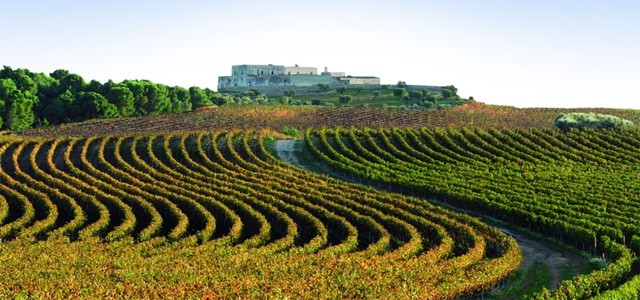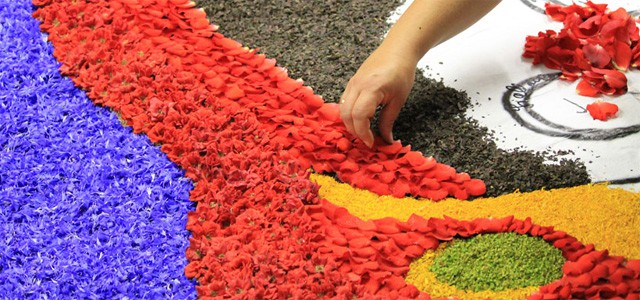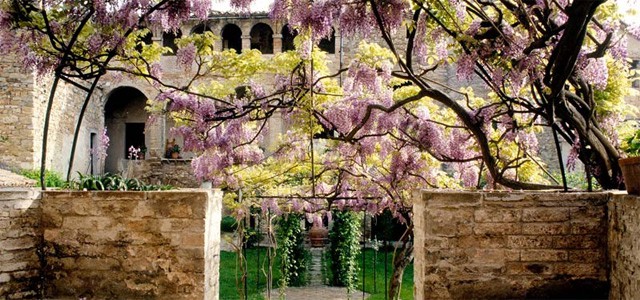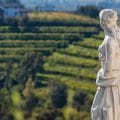Located in the heart of central Italy, Umbria features picturesque rolling hills with poplars and cypresses, and mountains that alternate narrow valleys and dense forests. The region is dotted with medieval hamlets and vineyards, which can be explored with breathtaking itineraries such as the idyllic Canticle Wine Route (Strada dei Vini del Cantico in Italian – its name deriving from the “Canticle of the Sun” poem by Saint Francis of Assisi).
The area produces a range of quality wines, including the Torgiano Rosso Riserva with the DOCG excellence label, and five DOC wines: Assisi, Colli Martani, Colli Perugini, Torgiano and Todi. Let us explore the Canticle Wine Route and its towns!

Torgiano DOC and DOCG
Torgiano is considered one of Italy’s wine capitals, and its viticulture tradition is rooted in Roman times, as local archeologic sites and ruins prove through furnaces, amphorae and mosaics. Featuring a defensive tower from the 13th century, the town celebrates its gastronomic, historic, artistic and environmental heritage in the Wine Museum and in the Olive and Oil Museum.
The local territory offers a wide vine variety, including Sangiovese, Canajolo, Grechetto, Pinot Grigio, Chardonnay, Cabernet and Merlot. The area was the first to be awarded the DOC in Umbria in 1968, and also the first to obtain a DOCG in 1990. The Torgiano Rosso Riserva (DOCG) is a rich and complex wine, suitable for long aging.
Todi DOC
The fame of the refined wines from Todi goes back to the 1st century A.D., when Ancient Roman writer Pliny the Younger celebrated its dry and velvety taste. Some of the local attractions include the Palazzo del Capitano and Palazzo dei Priori, which are striking medieval buildings that overlook the alleys and squares of Todi’s historic center. Other towns located in the Todi DOC area are Massa Martana, Collazzone and Monte Castello di Vibio.

Colli Perugini DOC
The hills near Perugia have been busy with wine production activities since Etruscan times, and some ancient varieties of autochthonous vines are still present, such as Mostiola, Tintarolo and Pecorina. Umbria’s capital, Perugia, offers a cosmopolitan atmosphere: it includes extensive museum collections, two universities, and also hosts international expos. Other towns of this DOC area are Marsciano, Fratta Todina and Monte Castello di Vibio, the latter being famous for the Teatro della Concordia (the smallest theater all’italiana in the world).
Colli Martani DOC
Located on the left bank of the Tiber River, this area produces wines that are particularly suited for long aging. The local vineyards gently extend through the towns of Bettona, Cannara, Montefalco and Bevagna. Most villages here are surrounded by Etruscan or medieval ruins and buildings, and many are included in the list of “The most beautiful villages in Italy”. Art lovers will particularly appreciate Bettona, which features paintings by Pietro Perugino, Dono Doni and Fiorenzo di Lorenzo in its Pinacoteca, and also hosts a series of paintings from the School of Giotto (1394) in the Oratorio di S. Andrea.

Assisi DOC
This area was the last to join the DOC club in the late 1990s, but like the rest of the region, its vine cultivation history is traced back to the Etruscans and the Romans. Two cultural, religious and artistic jewels are the absolute protagonists here: Spello and Assisi.
If you are traveling to the area you might want to match your trip with a traditional event that takes place in Spello: the Infiorata involves the creation of over sixty flower carpets in the historic center to celebrate the Corpus Domini Feast. The town is also famous for the striking Baglioni Chapel, frescoed by Pinturicchio in the church of Santa Maria Maggiore. Finally, the itinerary reaches the soft-pink granite stone walls of mystical Assisi. Here you will find not only the Churches that thousands of pilgrims visit every year, but also other monuments such as a Roman amphitheater and the Temple of Minerva.
Activities: vineyarding and a lot more
This mesmerizing wine route is ideal for enjoying all that the vineyards and wineries have to offer! Apart from visiting them, you can actually learn everything behind the production of wine, from harvesting to labeling the bottles in an eco-friendly way. Make the most out of your wine experience by enjoying a picnic out in the vineyard, and a delicious dinner with local products inside the winery. And it should go without saying, but just in case: wine tasting sessions are a must!
Other activities that can be combined with your exploration of the Canticle Wine Route are: visits to local olive oil mills and olive oil tastings, cooking lessons, cultural tours, horse riding, cycling. And for the ultimate thematic spa experience, make sure to book and unwind with a wine treatment in the wellness center!

Where to stay: hidden gems suggested by Italian Special Occasions DMC
Orti degli Angeli: Located in Bevagna, this elegant residence is set in a historic building from the 1600s. It overlooks the ruins of an ancient Roman temple and theater, which are harmoniously integrated with the property’s beautiful and peaceful gardens. The Orti degli Angeli (angels’ gardens) feature colorful and scented wisteria, jasmine, clematis, rose beds and lavender. Some of these are used in the delicious desserts served in the restaurant, which specializes in ancient recipes from Umbria.
Palazzo Seneca: A unique property in Norcia, located between the Canticle Wine Route and the Marche region. The charming residence from the 16th century fuses design and tradition, and is owned and managed by a family that has been in the hospitality business since 1850. After a long day out exploring Umbria, you can retreat in the evocative wellness center, which features ceilings with barrel and groin vaults and old stone floors.
Photo credits:
Wine Museum, Torgiano, Umbria – image from visitperugia.com
Colli Perugini vineyards – image from umbriatasty.it
Infiorata: preparation of a flower carpet on Spello’s streets – image from stradadeivinidelcantico.it
The garden at Orto degli Angeli


